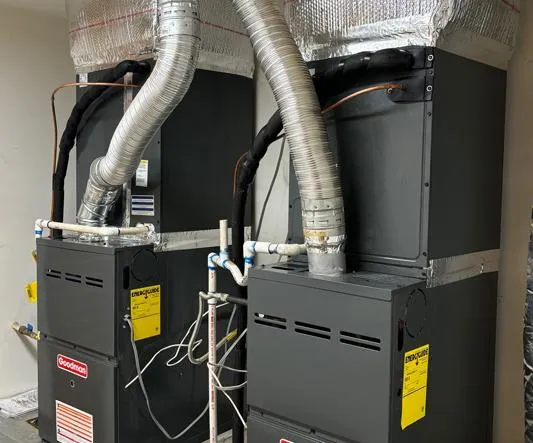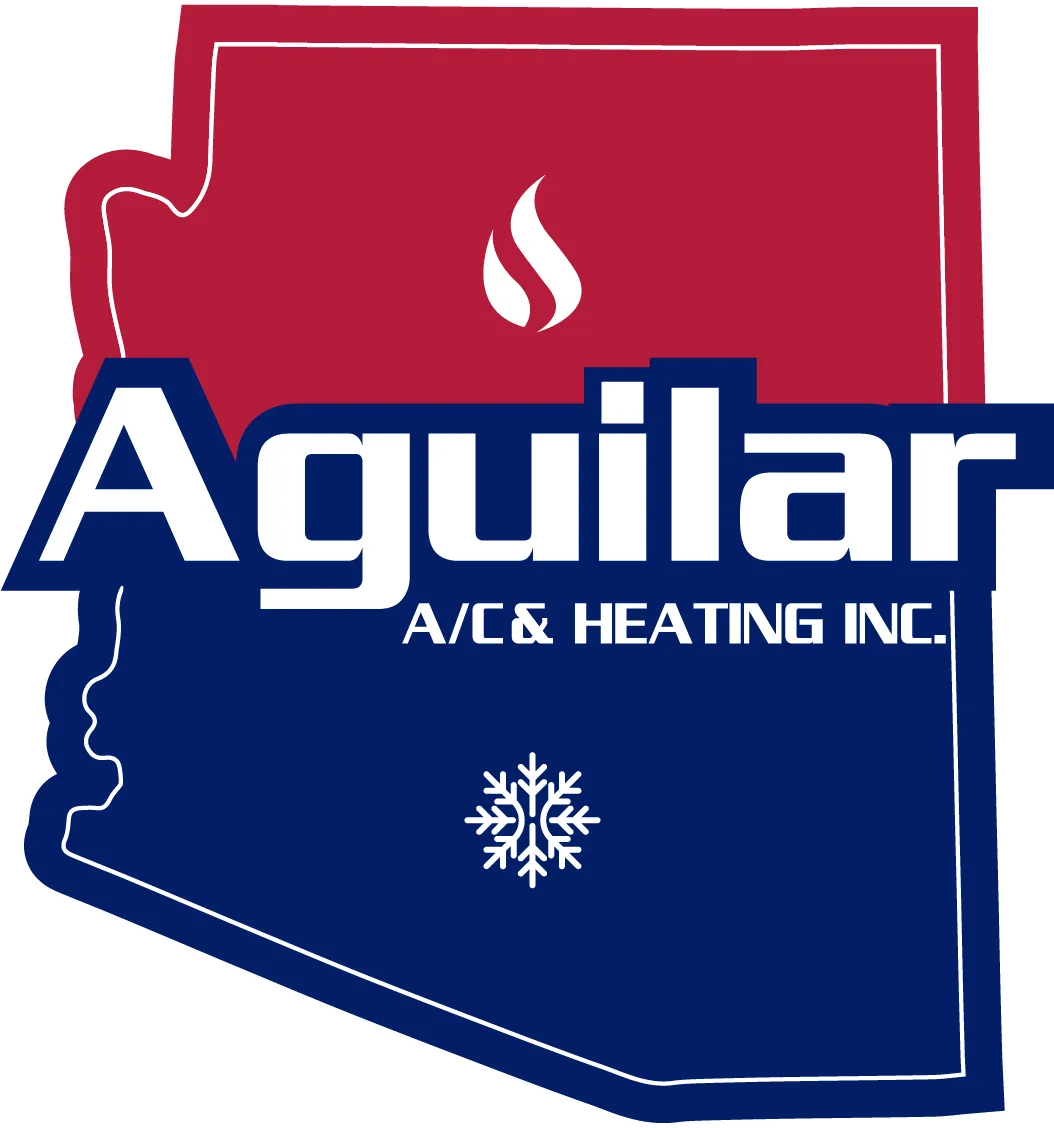Aguilar A/C & Heating
Blog

How to Spot Early Warning Signs of Furnace Trouble Before Winter
Imagine waking up on the first chilly morning of the year only to find that your furnace won’t turn on. In Phoenix, we may not face harsh winters, but when temperatures dip into the 40s at night, a broken furnace quickly becomes uncomfortable — and sometimes dangerous.
The good news is that most furnace failures don’t happen overnight. Your system usually gives warning signs well before it stops working completely. This guide will help you recognize those early red flags so you can schedule maintenance or repairs before winter arrives.
Why Early Furnace Checks Matter
Your furnace sits idle for much of the year in Arizona, which means dust and wear can build up unnoticed. Turning it on without inspection can lead to:
Sudden breakdowns on the first cold night
Higher repair costs if small issues go unchecked
Energy waste from poor efficiency
Safety risks from gas leaks or faulty burners
Catching problems early helps you avoid these scenarios, keeping your home warm and your repair costs lower.
Common Early Warning Signs of Furnace Trouble
Here are the most important signs to watch for as fall approaches.
Strange Noises
Your furnace should run relatively quietly. Banging, screeching, rattling, or popping noises may indicate loose parts, worn belts, or ignition problems.
Uneven Heating
If some rooms stay cold while others are warm, your system may have airflow issues, duct leaks, or a failing blower motor.
Rising Energy Bills
A sudden spike in your gas or electric bill — without a temperature change — can point to an inefficient furnace struggling to keep up.
Short Cycling
When the furnace turns on and off too frequently, it may have a clogged filter, thermostat issue, or failing heat exchanger.
Yellow or Flickering Pilot Flame
A steady blue flame is normal. A yellow, flickering, or sooty flame can signal incomplete combustion or carbon monoxide risks.
Unusual Smells
Burning dust smell at first startup is normal. Persistent burning, musty, or gas odors require immediate attention.
Excess Dust or Poor Indoor Air Quality
Dirty filters, clogged ducts, or failing components can cause more dust to circulate, aggravating allergies and lowering air quality.
Old Age
Most furnaces last 15–20 years. If yours is approaching this range, you’re more likely to see multiple small issues that signal it’s time for replacement planning.
Pre-Winter Furnace Checklist
Before the weather turns cold, take these steps to make sure your system is ready:
Replace or Clean the Filter
A clean filter improves airflow and efficiency.Test the Thermostat
Make sure it switches from cooling to heating properly and is calibrated correctly.Inspect Vents and Registers
Ensure they’re open, clean, and not blocked by furniture.Schedule a Professional Tune-Up
Have a licensed HVAC technician check the burners, heat exchanger, blower motor, and safety controls.Check Carbon Monoxide Detectors
Replace batteries and test detectors to ensure they’re functioning.Listen During First Startup
Pay attention to how your furnace sounds when it first runs — unusual noises may be an early sign of trouble.
FAQs
How often should I have my furnace inspected in Phoenix?
Once a year, ideally in the fall, to catch issues before heating season begins.Is it dangerous to ignore furnace noises?
Yes, unusual noises can indicate loose parts or failing components that could lead to breakdowns or safety hazards.What should I do if I smell gas?
Shut off the system, leave the home, and call your gas company or emergency services immediately.Does a furnace tune-up really save money?
Yes. Regular maintenance keeps the system efficient, which lowers energy bills and reduces costly emergency repairs.When should I consider replacing my furnace?
If it’s 15–20 years old, breaking down frequently, or your energy bills are rising despite maintenance, replacement is likely the most cost-effective option.
Conclusion
Spotting furnace trouble early is the best way to stay warm and safe through the winter without surprise breakdowns. Noises, uneven heating, high bills, and yellow pilot lights are all signals your furnace needs attention.
Schedule a professional inspection before the first cold snap to avoid emergencies and keep your system running efficiently all season. A little preparation now means a warmer, safer home when you need it most.
Our Services
Helpful Links
Contact Information
Phoenix, AZ 85042
Business Hours
Mon - Fri: 8:00 am - 4:30 pm
Sat & Sun: Closed
© 2025 All Rights Reserved | Aguilar A/C & Heating

